These are just a few books that I have found interesting and useful. I have read all of them, many several times. My wife and I often listen to one of these while we are cooking and I always listen to a book when I am walking or on the treadmill, or in the car…
Good Books To Read or Listen
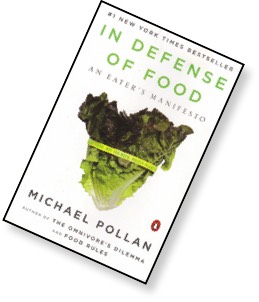
Kindle, Audio and Paperback. This is an important book that covers many issues tied to the politics and business of nutrition. He covers not just what has happened over the last 100 years but why it happened.
A must read book. One of the most important points he makes is that the nutritional value of even our foods with a Cal-Index under 1.0 in the CPT have eroded nutritional value. Reason ? Over the last 100 years commercial pressure to maximize yield on the farm, and to maximize caloric content has used selective breeding to create plants and animals missing micro-nutrients. This same data is reviewed in a detailed report written by Brian Halweil "Still No Free Lunch: Nutrient levels in U.S. food supply eroded by pursuit of high yields" published in 2007.
After reading this book not only do I try to buy Organic foods, but now I also do best to buy Heritage Organic foods, where seeds are same as used 100 years ago.
★★★★★
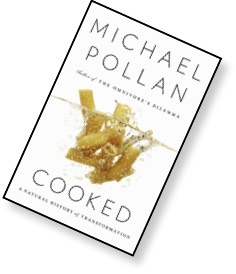
Kindle, Audio and Paperback. Pollan is one of the most knowledgeable food journalist in the business, and an excellent writer. Cooked explains how you cook with fire water air and earth (fermentation) with a twist. He finds the best cooks in the US and works with them as an apprentice to learn how to cook with each. By so doing, he also reviews the history of how we as humans have cooked an why these cooking methods evolved. Great entertaining book - My wife and I have listened to it several times usually while we are cooking.
★★★★★
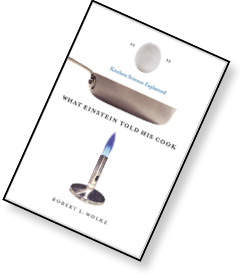
Kindle, Audio and Paperback. Robert Wolke is a professor of chemistry who has the gift and passion of writing well and ability to explain complex things to simple minds like mine, and love of food and cuisine.
This book focuses on specific foods and ingredients (sugar, salt, and fats). I never understood the chemistry of lipids triglycerides, saturated, unsaturated, Omega 3 fats ….. until I read and listed to his books. It is based on questions from his Washington Post column, and his expanded answers about food science, nutrition, ingredients, and many other topics. My wife and I have listened to the audio version at least half a dozen times and always learn something new. When we start to cook in evening, about 5PM - we play books for few hours and skip TV. This and his other book What Einstein Told His Cook 2 are both "must reads".
★★★★★
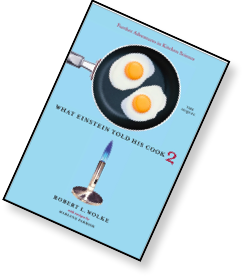
Kindle, Audio and Paperback. Robert Wolke is a professor of chemistry who has the gift and passion of writing well and ability to explain complex things to simple minds like mine, and love of food and cuisine. This is a second book in the Einstein series. It focuses on eight major food categories Beverages, dairy, vegetables, fruits grains, seafoods, meats herbs and spices.
It is based on questions from his Washington Post column, and his expanded answers about food science, nutrition, ingredients, and many other topics. My wife and I have listened to the audio version of both of his books at least half a dozen times and always learn something new. When we start to cook in evening, about 5PM - we play books for few hours and skip TV. This and his other book What Einstein Told His Cook 1 are both "must reads".
★★★★★
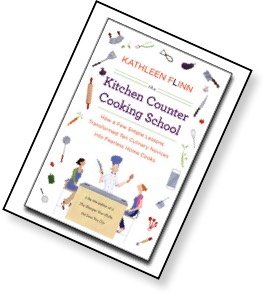
Kindle, Audio and Paperback. Flinn is an excellent story teller, once you start this book hard to put it down. Wish she would make it a movie. She graduated from the Le Cordon Bleu in Paris - the most famous culinary school on planet. She wrote her first book a few years later ("The Sharper Your Knife, the Less You Cry: Love, Laughter, and Tears in Paris at the World's Most Famous Cooking School"), about her experiences. She kept getting asked when are you opening a restaurant, and had no answer. However as she wandered around grocery stores noticed as she shopped for good ingredients what "junk" others were purchasing because they had no time to cook. The book is all about her experience taking nine people who were eating the fast food "western diet", and teaching them how easy it is to cook with ingredients in once a week classes. After a year most of them became "home cooks" and gave up the western diet. Flinn provides great simple recipes though out the book. She shows how anyone after a long day at the office, can cook a gourmet meal en Pappillote (parchment paper) with few minutes preparation time and 20 minutes in the oven. This book and Kathleen were inspirational to me especially in early stages of my own weight and cooking attempts.
★★★★★
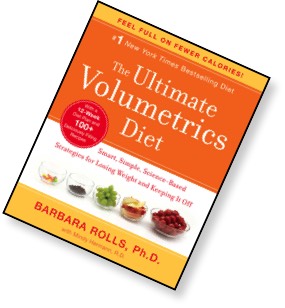
Kindle, Audio and Paperback. This is a must own book. Professor Rolls pioneered the concept of the Cal-Index but she calls it the Energy Density (ED) and ties caloric reduction to things that also have reduced ED's. She emphasizes that by eating low energy density foods you get to eat more and that increased volume, intern leads to a full stomach and satiety. She provides detailed meal plans and has many good calorie reduced recipes. However, she stays away from counting calories and also emphasizes need for exercise to lose weight. Dr. Rolls is part of the nutritional old school and has a strong focuses on both macronutrients and micronutrients and a balance diet based on USDA recommendations, with emphasis on food selection food in what she calls category 1 (Cal-Index below 0.7) - She claims to have had great success with individuals successfully losing weight. Her diet is not gimmicky and makes sense. Carnot builds on her work and science, but we think satiety is not just about food volume, it is also about food quality and taste. We think it is important to make diet cuisine gourmet and portion controlled, The eater has to become Calorically Calibrated, and be able to accurately guess caloric content by looking at an ingredient or dish - none of that is difficult or time consuming.
★★★★★
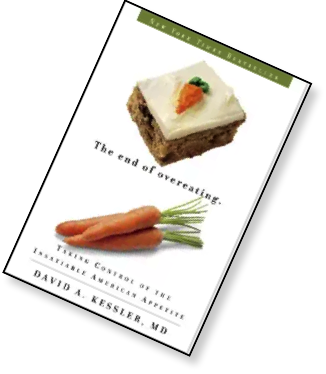
Kindle, Audio and Paperback. Dr, Kessler was head of the FDA from 1990-1997. This book slams industry for making food that is unhealthy, manufactured to sell and likely leads to the obesity problem in the US. He spends lot of time on how the industry takes advantage of our brain chemistry by adding sugar, fat and salt.
He really makes three important points; 1. The American food industry uses Fat Sugar and Salt to make our food more palatable and tasty. 2. That Fat Sugar and Salt leads to overeating and that has led to obesity in 30% of our population. 3. That obesity has created a healthcare crisis in America.
Good book to listen in car on way to work.
★★★★★
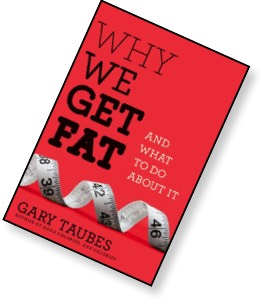
Kindle, Audio and Paperback. Taubes may be one of the most knowledgeable humans on the planet of both the obesity scientific literature and the diet literature. He is a journalist, and is scientific both in his thinking and writing. He does not dumb things down, is blunt and fearless. In his earlier book Good Calories Bad Calories (2007, 500 pages) he thoroughly reviews scientific literature, in the end to make one important point - we are obese because we eat too many carbohydrates. In this 2010 book he again reviews the literature to make the same point but his summaries of studies are brief and focused and this book is only about 200 pages.
It is hard to argue with assertion that we get fat because of too many carb calories, of course that is true. And I am willing to accept that fats and proteins play less of a roll in obesity. But I think many examples of weigh loss and management and many studies that show in the end weight loss depends only on caloric reduction not caloric content.
Losing weight is not the reverse of gaining weight.
One's ability to lose weight anytime is a skill and requirement to manage both health and weight for many of us. That skill is not magic it is physics. There are many routes to obesity but only one route to loss. The "Western Diet" (what we Americans eat) has created a health crisis. But in the end weigh loss over the last 200 years has always relied on eating less than you burn. You can watch and monitor macro-nutrient and micro-nutrient content of that caloric input if you like (e.g. carbs) … but for most of us that increases likelihood of diet failure and post-diet weight regain, because just too many things to monitor and track.
This is an important book and I too understand the science and issues tied to obesity much better by reading both the Taubes books several times - Why We Get Fat is required reading, but not sure I agree with Taubes conclusions. My challenge to Gary Taubes and others who claim to have a diet solution tied to selective reduction of food content and not tied to simple across the board thermogenic, caloric reduction follows:
The Challenge: I am a very big fan of Gary Taubes, but I ask Gary to put on 75 pounds (that is easy to do he just follows instructions in his book). Now lose it and track and measure everything in and out as we do similar to Carnot, but lose that weight only with selective macro-nutrient reduction, without across the board thermogenic caloric reduction….
That N-of-One study would be hard to challenge, in my view a near physical impossibility and no one has yet accomplished serious weight loss program with only selective macro-nutrient reduction.
Next book after the challenge is "Why We Get Thin", and it is one page with one word Thermodynamics.
★★★★★
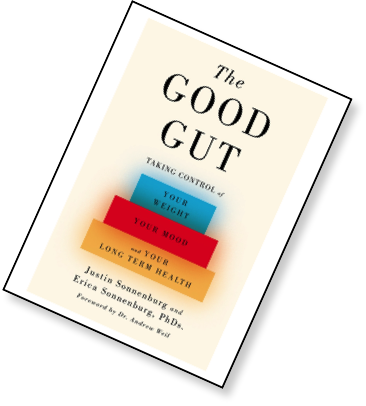
Kindle, Audio and Paperback. Microbiota, bacteria that live in our gut often called the forgotten organ in humans, play a very important roll in nutrition and health. This is a very recent and active field of research, and well reviewed in this book, with references.
This does not have anything useful on how to lose weight, but is very important after you lose weight that your intestinal flora and fauna are well fed with fiber, and that you have the correct healthy microbiota balance. Can be tested by the American Gut Project - they DNA sequence all organisms in a stool sample. Useful to see if you have balance microbiota. This is a great book and I highly recommend reading it careful. Exciting research that is moving fast.
It is hard to argue with assertion that we may get fat because of microbiota, is likely true. But evidence to date shows that even if you replace microbiota with thin samples, does not lead to long term weigh loss. Fat mix simply returns over a period of few months. I think many examples of weigh loss and management and many studies that show in the end weight loss depends only on caloric reduction not caloric content. That is not to discount importance of fiber during weight loss program - however too much weight is like cancer and must be treated at all costs.
Losing weight is not the reverse of gaining weight and remaining healthy - this book is about how to maintain your health once you hit your weight target.
★★★★★
Important Industry Books, Good To Own
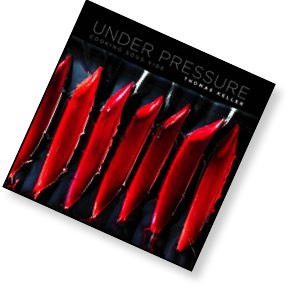
★★★★★
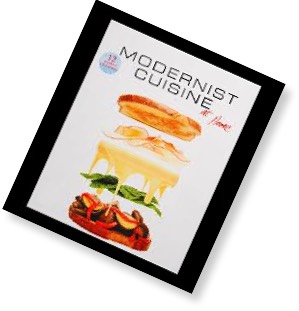
Hardback only. Myhrvold was the CTO of Microsoft, and caused in to create a 20,000 sq foot cooking research laboratory, called Intellectual Ventures. He published a five volume book also called Modernist Cuisine targeted at the restaurant industry. This one volume version just published is targeted for home cooks. An excellent resource book on latest cooking technology, and cooking methods with amazing photography and many excellent receipts. This is not a book you take with you on a business trip. Many of the recipes are 1-2 day "projects" precisely specified ingredients by weight (as it should be). The book provides great insights into cooking fundamentals, and practical guide to things like how to thicken sauces, make a perfect egg, or hamburger.
This is not about dieting or weight loss - it is about cooking technology, ingredients and methodology.
★★★★★
How To Cook and Sous Vide Books
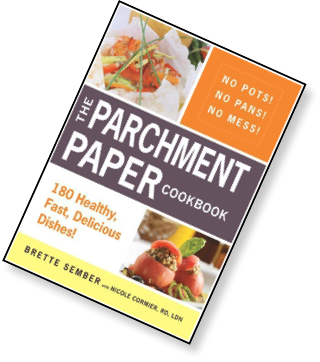
May Sous Vide dishes can be cooked using parchment paper in convection oven. White fish with few vegetables (green onions, lemon grass, tomatoes) only takes a few minutes to cook, wrapped in parchment paper and some seasoning. Carrots with bit of honey and orange easy to make, and delicious side dish.
★★★★★
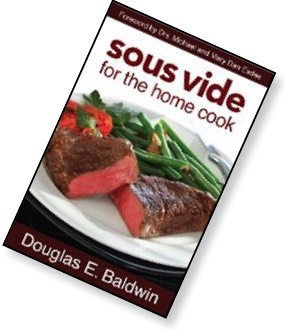
I use Sous Vide for many dishes, except pieces of beef shown on cover. and salmon. Those seem to be cover pictures for all Sous Vide books. Grass feed beef is not very tender but because it is lean has a call index of 1.6-2.0. However, if you cook Sous Vide for 4-5 hours or longer it becomes tender and taste almost as good fatty cuts like tenderloins. Sous Vide is great for tomato compote, carrots, artichoke hearts, apples, pears, cod, haddock, and shrimp. Will add more latter.
★★★★★
